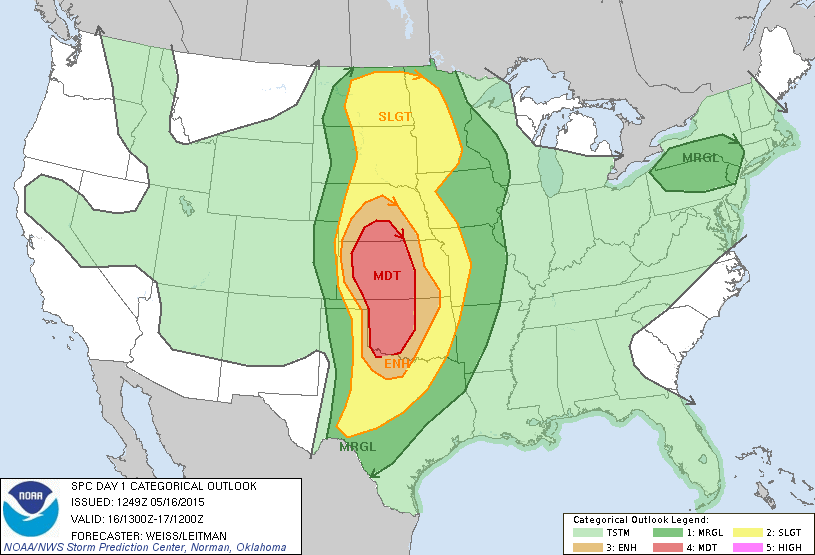Simla day. One of the beastliest supercells of the season hovered across the eastern Colorado prairie while a large number of chasers including myself sat in northwestern Kansas, baking in sticky June heat on the High Plains. What had initially looked like a very promising day for some picturesque tornadic supercells in northern Kansas turned to pretty big disappointment as towers struggled to break through the cap in a primed environment. Colorado meanwhile put on another show of multiple tornadoes under a huge mothership of a classic supercell.
As most of my usual chase partners had departed the Plains for the summer or were otherwise disposed, my friend Mark and I went alone to the warm front draped across northern Kansas. After getting an early start, we managed to make Salina by noon before jaunting west to Russell and gassing up. The air was juicy, with the dewpoints climbing into the low 70s and a Cu field began to slowly fill in through the early afternoon. We continued north out of Russell to just east of Paradise at the junction of US 281 and KS 18. We ran into Ben Holcomb, and shot the breeze for roughly 2 hours as the Cu field slowly bubbled along. UCAR had launched a sounding in Phillipsburg and noted a strongly favorable atmosphere for supercells, with the cap still holding strong.
Finally, a tower shot off out of a soupy mess of clouds around 2145Z (4:45 PM CDT). We moved rapidly north towards Osborne to get in front of it.
However, it was not to be. The tower almost immediately was high based and slowly began to wither away from the base up and a mere 30 minutes after the above image, was nothing but an orphan anvil. We sat, frustrated, just outside of Osborne as the orphan anvil slowly drifted away and dissipated.
We threw in the towel around 5:30 and began to drift back east towards Glen Elder for an easy jaunt down US 81 to I35, but not before we were stopped by a sudden explosion of convection to the west near Quinter. We immediately turned around (running back into Ben in the process) and snaked our way through Stockton and Hill City and south into the heart of Trego County by way of WaKeeney. On the way down 70, we were treated to a crisp updraft.
Shortly after the photo above, we dropped south into the Smoky Hill River and it's chalky draws. The roads were predictable horrible (Trego County is notorious for being a chaser's nightmare with roads) but were able to pull off and view the somewhat benign storm in front of us. By this time, a nice liberty bell-shaped supercell was ongoing further to our northwest near Atwood but it was too late. We stopped on an isolated road and decided to enjoy what was becoming a great lightning show.
After enjoying a 30 minute lightning show, Mark and I decided to begin to trek back towards 70. We had strayed farther west than initially anticipated and were running low on gas. After gassing up in Quinter, we began the long drive back to Norman, with lightning trailing us the whole way. We arrived, nearly on death's doorstep, at 4AM. Unfortunately there wasn't a whole hell of a lot to show from this chase and the failure of the eastern target in comparison to what went down in Colorado made it a tough pill to swallow. This would be my only chase of June and helped continue my dislike for the month.
Chase Stats
Miles Driven: ~963
Cost: $34
Tornadoes: 0
Hail: None
Winds: None























































